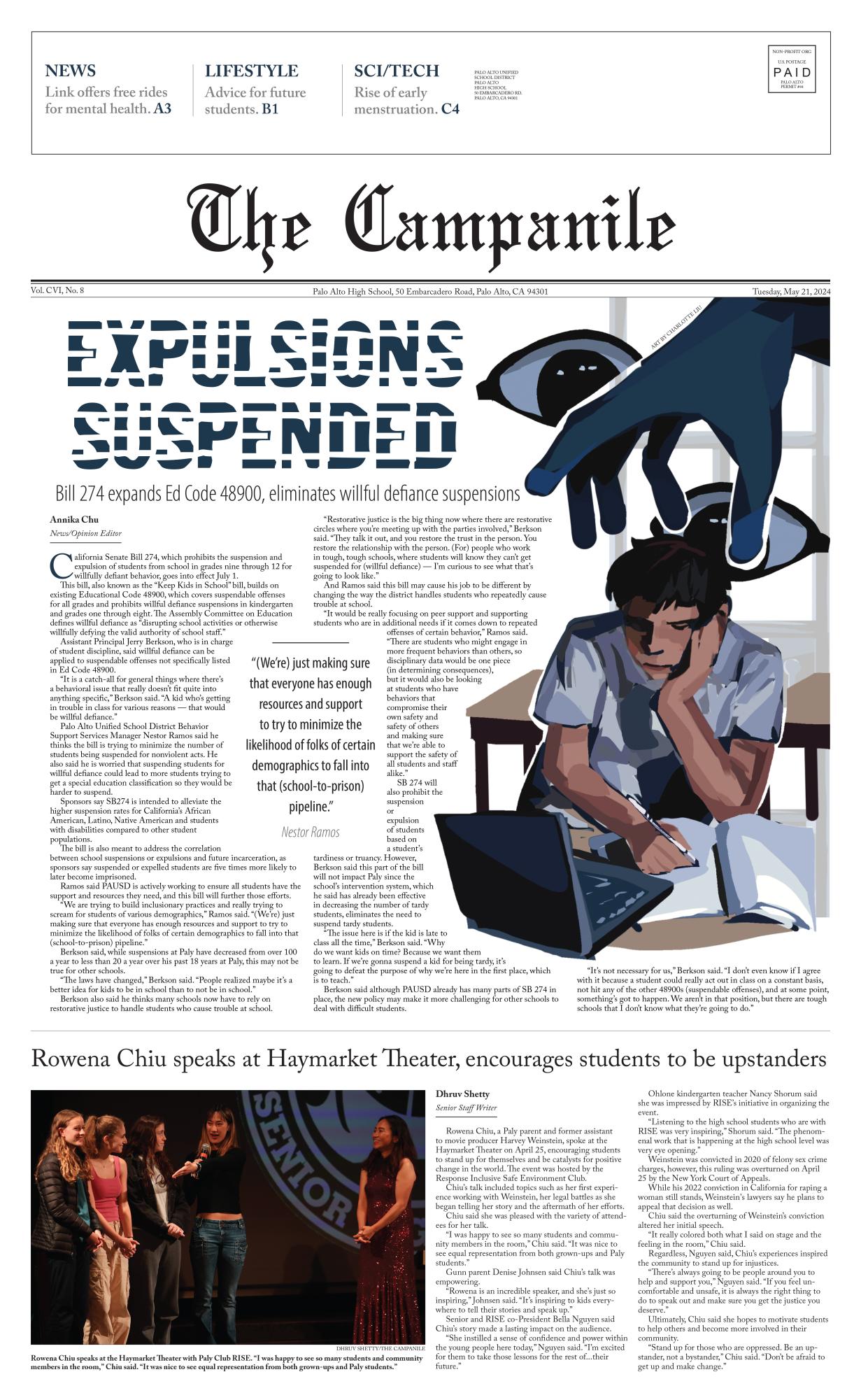When I read Carolyn Walworth’s article on Palo Alto Online and saw the sequential articles published on the New York Times detailing how miserable all the high school students here in Palo Alto are, it made me furious. Not only do these stories represent the large minority of students, but they make rash assumptions about our families and every individuals’ life goals.
The first article published in the New York Times April 12, written by Frank Bruni, detailed only three outside sources, all of which addressed only one side of the issue. His main source was, of course, Walworth. Bruni, obviously, decided to use the harshest remarks from Walworth’s post on the Palo Alto Online, and in doing so misrepresented all that she had to say, along with the Palo Alto student body as a whole. His second source was Julie Lythcot-Haims, whose sole qualification is the parenting of two students, one of whom is not even in high school yet. Bruni’s final source was Adam Strassberg, a psychiatrist practicing here in Palo Alto, with a son attending Palo Alto High School. Strassberg, while qualified, was, again, only quoted addressing the same side of the story
On April 24, the New York Times published another story about our community, which was printed on the front page of the Sunday review. This article, written by Matt Richtel, was about the line between helping students succeed and pushing them too far. Again, Richtel’s only student voice was Walworth, and again, the author used only her most pointed remarks. These articles all have a common theme — none even suggested the idea that there are sane students in our community, students who look out for their own well-being as well as the mental health of those around them.
Although many students in our district feel over-pressured to “succeed” in life, the majority who strive for happiness have not been represented whatsoever in the recent media spike surrounding our community.
While many community members feel the need to point fingers at the administration for the limited number of students who feel the “need” to go to an Ivy League school, the administration ought not take the blame for the issue brought about by our community as a whole. Our district is one of the most “successful” districts in the nation and prepares students for the road ahead. Our schools are here to educate us, and are doing a great job at that. While classes tend to be rigorous, students learn much more than the average high school student in the state. This is reflected by Paly’s average SAT score being over 1950, 460 points over the California average. For this we should all feel lucky and blessed to have the opportunity to learn, and most students and parents alike express this sentiment
Along with being excellent educators, most teachers in the Palo Alto Unified School District (PAUSD) are helpful, understanding and supportive of their students — helping to strike the perfect balance between stress and happiness. In fact, many tend to be more proud of their students who attend the lesser known colleges, knowing that they will have a better experience than at a top-tier university. I have even heard faculty members almost looking down upon students who go to the most prestigious universities, condescendingly stating that “of course [very ‘smart’/‘successful’ student] is going to Stanford.”
Our administration has room to grow in teaching students more stress management skills as opposed to attempting to out stress completely. While our community is extremely focused on academics, so are many other places around the country. There are schools where most students take Advanced Placement (AP) BC Calculus as juniors, meaning teenagers are able to cope with the stresses that school brings, but what can our district do to encourage students to learn while helping them find their own boundaries.
The largest stressor that outspoken students claim to endure is homework, especially in AP courses. While busy work adds unnecessary stress, it seems that most teachers only assign relevant work. And although the amount of homework that students appear to have every night may seem daunting, it is for good reason. AP classes are college-level courses. That means that students are expected to do more learning, so much so that teachers cannot fit everything into the few hours they see students during each week. It is fair for them to have students do more learning outside of the classroom than a typical high school class.
Personally, I have opted to take five APs over the past three years. In these classes, I have learned an extensive amount through most homework assignments, and I never had a night when I had more than three hours of homework. In fact, throughout high school, I only had an hour of homework per night on average. Although that may be a little bit below most students’ averages amount of homework, when parents and students say that they have nearly five hours of homework per night, that is a minority.
Finally, students are not the only ones being misrepresented in the media — so are our parents. While there are some parents in our community who feel that their students will only be successful if they attend a well-known university, most are easy-going and wish the best for their students’ mental health. My parents, for example, encouraged me at the beginning of junior year to drop AP Biology and enroll in a ceramics course because it would give me a break in my day. This turned out to be one of the best decisions of my life, and as a result of this, I had a healthier, happier junior year.
Our community expects the best from each individual. While some students and other community members feel too much pressure, and recently have been quite outspoken about this expectation, the rest of us know that getting an “F” on your Honors Chemistry final (yes, I got a 56 percent) is not the end of the world.








